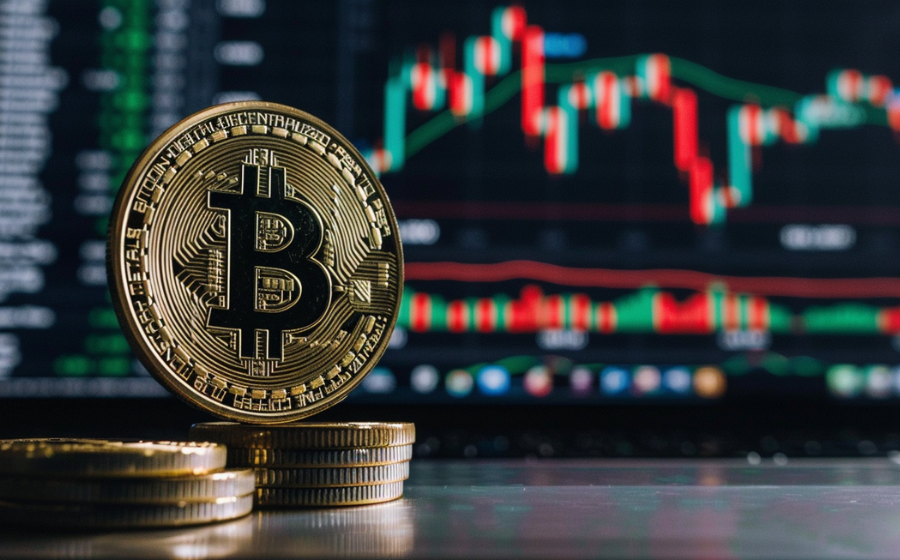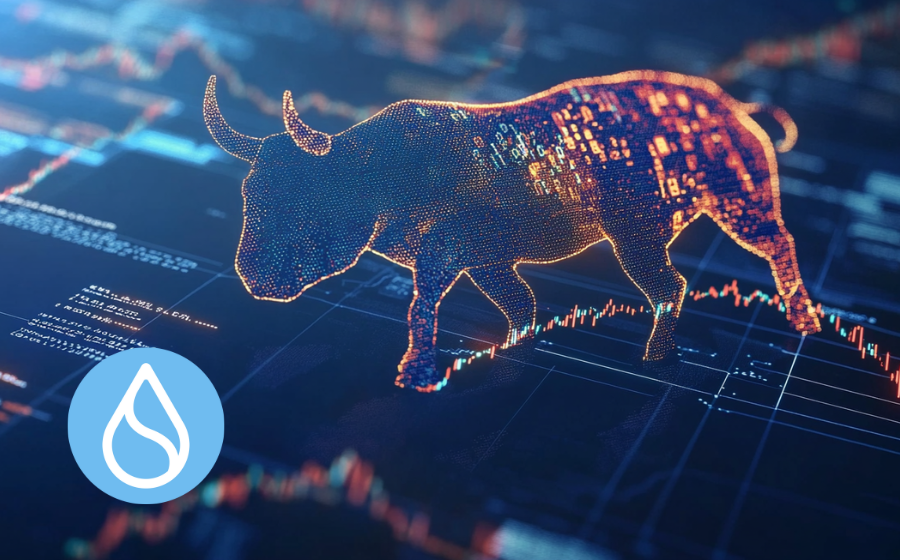
KEYTAKEAWAYS
- Significant Price Increase: From $567.64 in 2014 to $72,000 in 2024, Bitcoin’s value surged over 12,000%, marking a decade of unprecedented growth.
- Consensus Drives Value: Bitcoin's price is largely influenced by consensus and market dynamics, with its legal recognition and spot ETF approvals enhancing its credibility and expanding its investor base.
- Positive Future Outlook: The upcoming fourth halving and growing institutional interest, coupled with real-world asset tokenization, indicate a potential for continued growth in Bitcoin's market value.

CONTENT
This article will review Bitcoin’s performance over the past decade and explore the reasons behind its surge of over 10,000%. If you’re not very familiar with Bitcoin or want your friends and family to start understanding it, this article is perfect for you.
BITCOIN’S TEN-YEAR TREND
In 2024, Bitcoin reached a new all-time high before its fourth halving, making this a remarkable year for the cryptocurrency. Beyond the impending fourth Bitcoin halving, the approval of spot ETFs has also brought Bitcoin into the traditional investment mainstream. The structure of Bitcoin ownership has undergone significant changes, with a growing proportion of institutional and traditional investors.
- Related articles: What is Bitcoin ?

(source: CoinGecko)
Ten years ago, the price of one Bitcoin was $567.64 USD. In 2024, the peak price of one Bitcoin reached $72,000 USD, an increase of over 12,000%.
WHY DOES BITCOIN HAVE A PRICE?
Blockchain technology has significantly advanced over the years, leading to the creation of a multitude of cryptocurrencies. Despite the emergence of thousands of different cryptocurrencies, Bitcoin remains the preeminent one, most famous for its sizable market cap and commonly referred to as “Big Pie” within the cryptocurrency community.
Essentially, blockchain is a decentralized ledger technology that spreads a single transaction record across multiple computers for joint recording and continuous synchronization. This ensures that the entries are accurate and secure from loss or manipulation. The Bitcoin blockchain specifically manages and records Bitcoin transactions, with Bitcoin acting as the principal unit of transferable assets on this ledger. Initially, Bitcoin was mainly used for transfers among individuals who held Bitcoin wallets, akin to trading virtual currency in online games for player-to-player exchanges.
(Important note: This is merely an analogy to facilitate understanding; Bitcoin is not a game token!)
5/22 – Bitcoin Pizza Day
On May 22, 2010, a notable transaction took place where someone offered to pay 10,000 bitcoins for two pizzas. This is considered the first documented physical transaction using Bitcoin. Calculated at current prices, this amounted to seven hundred million dollars, or more than twenty billion New Taiwan Dollars for two pizzas. While it may seem absurd now, at the time, it represented a breakthrough, demonstrating that Bitcoin, despite being a virtual electronic signal on the internet, could be used to purchase real-world items.
This little story about Bitcoin answers the initial question: Why does Bitcoin have a price?
The value of Bitcoin is based on consensus; it has a price because people are willing to sell and buy, and both parties agree on the transaction price. The final price of Bitcoin is set by the market’s supply and demand at any given time.
WHY BITCOIN PRICES SURGE: KEY FACTORS AFFECTING BITCOIN’S VALUE
Consensus on Value:
Bitcoin is a decentralized cryptocurrency that operates without the backing of any physical entity, and its primary value is based on consensus. The key question of consensus is how many people believe Bitcoin has value and how high that value is.
- The more people who perceive Bitcoin as valuable, the stronger the consensus.
- The higher the perceived value of Bitcoin, the stronger the consensus.
Initially, Bitcoin was only recognized within a small group, but as more people became familiar with and agreed on Bitcoin, the consensus grew stronger. With the birth of the cryptocurrency industry, even more people recognized and agreed on Bitcoin, strengthening the consensus further.
Now, some countries have even made Bitcoin legal tender, with national assets invested in it. Many countries have approved Bitcoin spot ETFs, allowing general investment channels to invest in Bitcoin and bringing it into the mainstream, thus familiarizing more people with Bitcoin.
Compared to its early years, the value consensus around Bitcoin today is vastly different.
The fundamentals of the cryptocurrency market have shifted, particularly with the changes brought by the recent bear market. During the 2023 bear market, the asset management group BlackRock filed for a Bitcoin ETF, and in less than a year, its Bitcoin spot ETF had assets exceeding $15 billion, poised to surpass Grayscale as the largest holder of a Bitcoin spot ETF.
Economic Factors and Market Supply and Demand:
While value is built on consensus, prices fluctuate with the market, mainly depending on current supply and demand:
- If supply exceeds demand > Price falls
- If demand exceeds supply > Price rises
Consensus and supply and demand are the two main factors that influence Bitcoin’s price, and other elements that can affect these factors can also impact the price. Here are a few examples:
2016 Halving Bull Market Factors:
- Bitcoin’s second halving > Reduced supply
- ICO boom > Increased funds into cryptocurrency, raising demand and consensus
- Bitcoin futures ETF approval > More funds entered, raising demand and consensus
2020 Halving Bull Market Factors:
- Bitcoin’s third halving > Reduced supply
- Development of DeFi Summer, public blockchains, NFTs > Practical developments attracted more funds and users, raising demand and consensus
- Quantitative easing by various countries > Overflowing investment funds searching for targets, increasing demand
Related articles:
WILL BITCOIN RISE AGAIN? CAN WE EXPECT A BULL MARKET IN 2024?
From the previous discussion, it’s clear that the two most critical factors influencing Bitcoin’s price are consensus and supply and demand. To answer the question, “Will Bitcoin continue to rise?” We need to analyze whether the consensus can grow stronger and how supply and demand might change in the future.
Here are three key factors to consider when evaluating whether Bitcoin will continue to appreciate:
- Fourth Halving: This event will once again reduce the supply of Bitcoin, scheduled to occur in mid to late April 2024. A reduced supply can typically lead to price increases if demand remains steady or grows.
- Spot ETF Approval: The approval of spot ETFs has brought Bitcoin into the view of mainstream investors, attracting more capital inflow and increasing public awareness of Bitcoin. This raises both demand and consensus. The approval has already been passed.
- Tokenization of Real World Assets (RWA): By bringing more real-world assets onto the blockchain, this initiative can attract more capital and people to the sector, increasing demand and strengthening consensus. This industry is currently developing.
These factors suggest that there could be a positive outlook for Bitcoin’s price in the near future, contingent on these developments continuing to drive demand and consensus in the market.
Looking for the latest scoop and cool insights from CoinRank? Hit up our Twitter and stay in the loop with all our fresh stories!


















